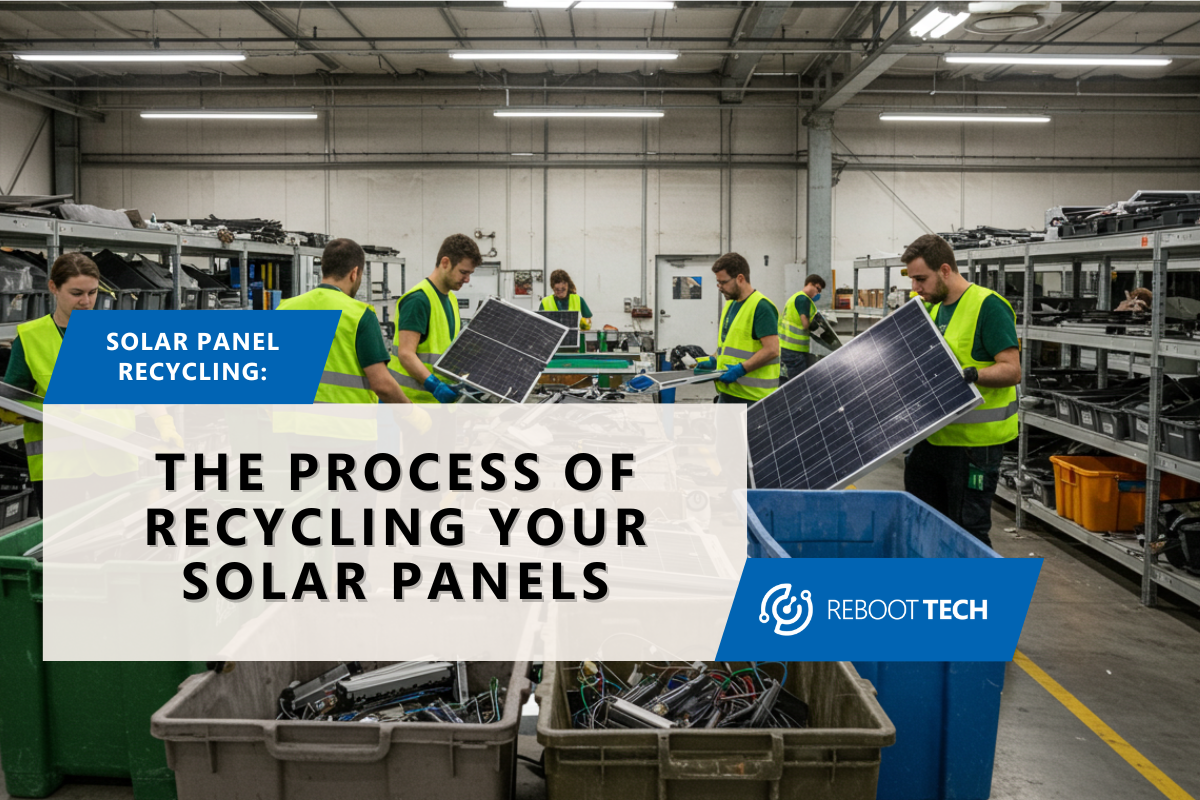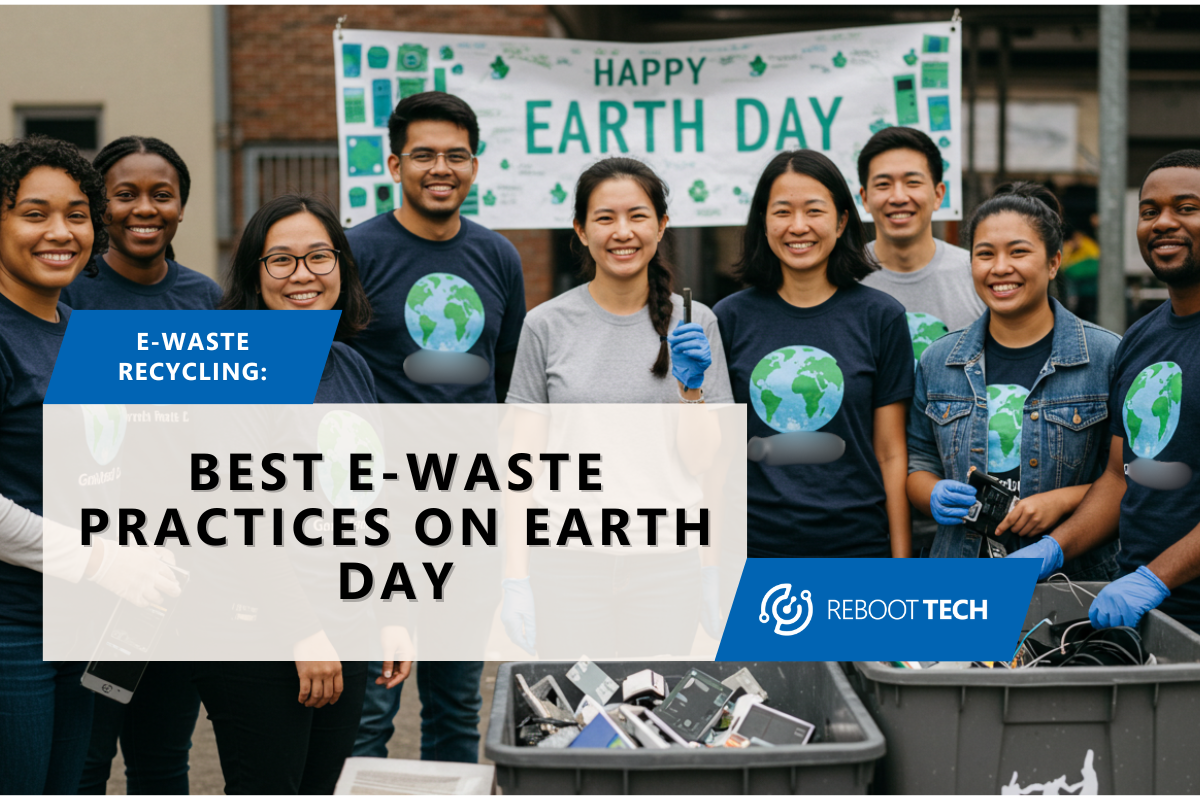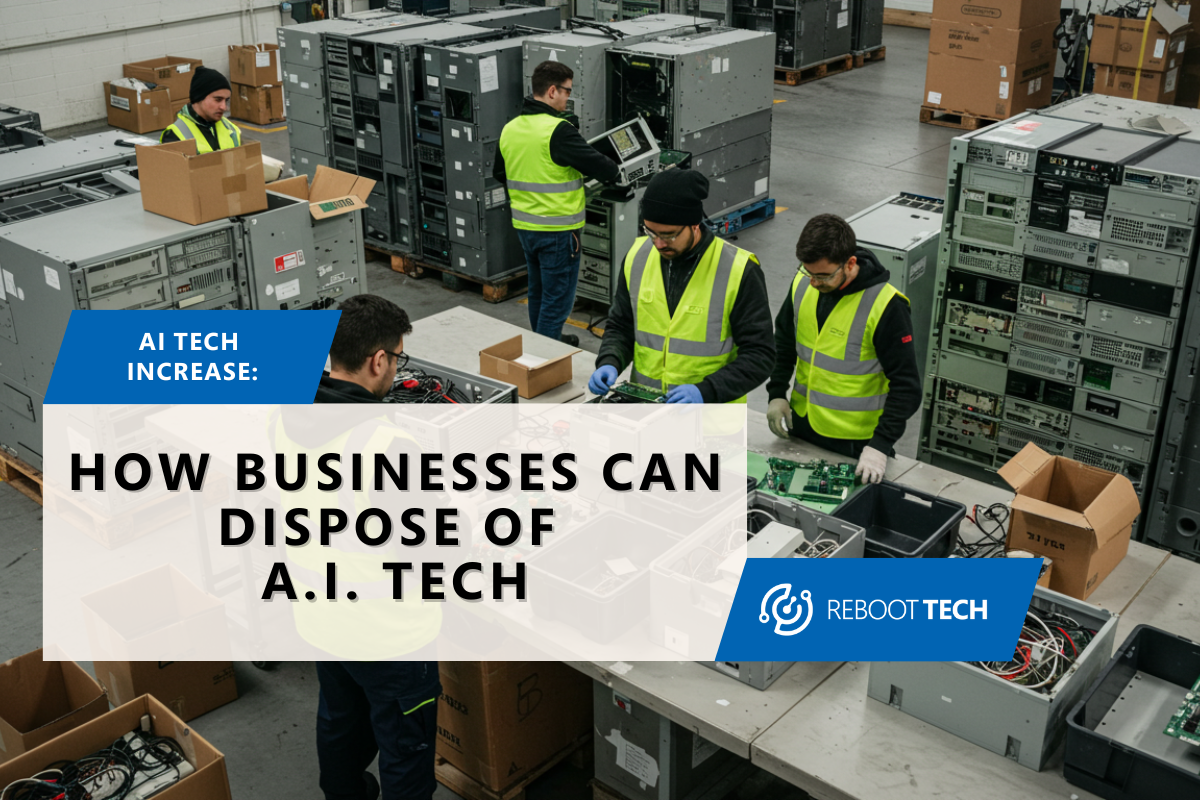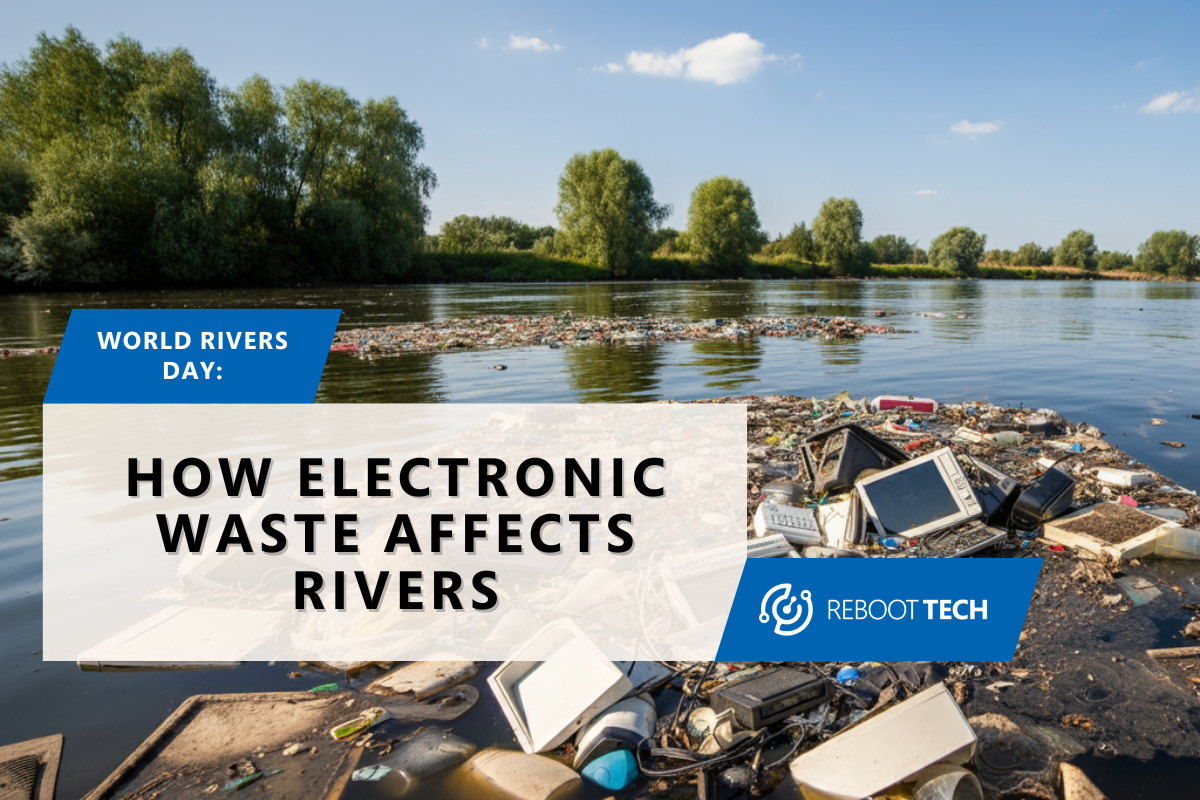
World Rivers Day: How Electronic Waste Affects Rivers
Every year, we celebrate World Rivers Day to recognize the importance of rivers and the role they play in sustaining life on Earth. Rivers are not just sources of fresh water; they are vital ecosystems that support countless species and provide for billions of people globally. Yet, despite their importance, rivers are under constant threat from pollution, and one growing concern is the impact of electronic waste (e-waste).
You may not think of your old smartphone, laptop, or TV as harmful to rivers, but the improper disposal of e-waste is causing significant damage to waterways around the world. Harmful chemicals like lead, mercury, and cadmium leak from electronics. This contaminates rivers and endangers wildlife and human health.
In this article, we’ll dive deep into the significance of World Rivers Day, the global e-waste problem, how e-waste is polluting rivers, and what steps you can take to properly dispose of e-waste to protect these essential ecosystems.
What is World Rivers Day?
World Rivers Day, celebrated annually on the last Sunday of September, is a global event that promotes awareness and encourages the conservation of rivers and waterways. Founded in 2005 by renowned river advocate Mark Angelo, this day highlights the many values of rivers and strives to increase public awareness about the need to protect them. From providing fresh water for drinking, agriculture, and industry to being crucial habitats for aquatic life, rivers are essential to the health of the planet.
The purpose of World Rivers Day is to celebrate the world’s waterways, educate communities about the issues they face, and inspire action to protect and restore these vital ecosystems. Rivers are the arteries of our planet, yet they are threatened by pollution, climate change, and overuse. One significant and often overlooked form of pollution comes from electronic waste, a growing issue in today’s digital age.
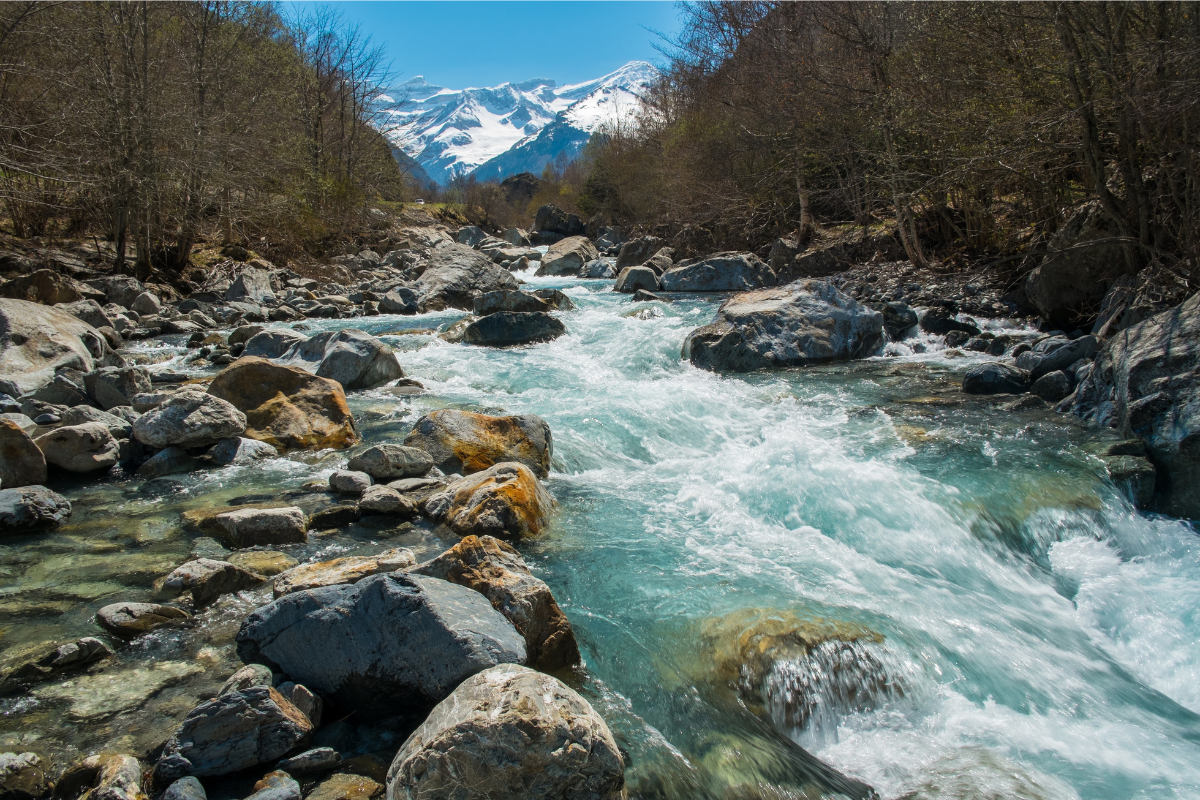
The E-Waste Problem
The world is more connected and tech-driven than ever before, and while technology brings countless benefits, it also creates a major problem: e-waste. E-waste refers to discarded electronic devices such as smartphones, computers, televisions, and other gadgets. With the rapid pace of technological advancement, consumers are replacing their electronics more frequently, resulting in millions of tons of e-waste generated each year.
According to the Global E-Waste Monitor 2020, the world produced a staggering 53.6 million metric tons of e-waste in 2019, a number that’s projected to rise to 74 million metric tons by 2030. Unfortunately, only about 17.4% of that e-waste is properly recycled, leaving the majority to end up in landfills or, worse, being illegally dumped into rivers, lakes, and oceans.
E-waste contains a cocktail of toxic chemicals like lead, mercury, arsenic, and cadmium, which can cause severe environmental and health problems when improperly disposed of. While e-waste may seem like an isolated issue, its impact on rivers and waterways is becoming more evident as electronics continue to pile up in landfills and find their way into our water systems.
How E-Waste is Polluting Rivers
Rivers around the world are facing a serious pollution crisis, and e-waste is a major contributor. When electronic devices are not properly disposed of, they often end up in landfills where they begin to break down. As e-waste deteriorates, it releases toxic substances that seep into the soil and eventually make their way into rivers and other water bodies through runoff.
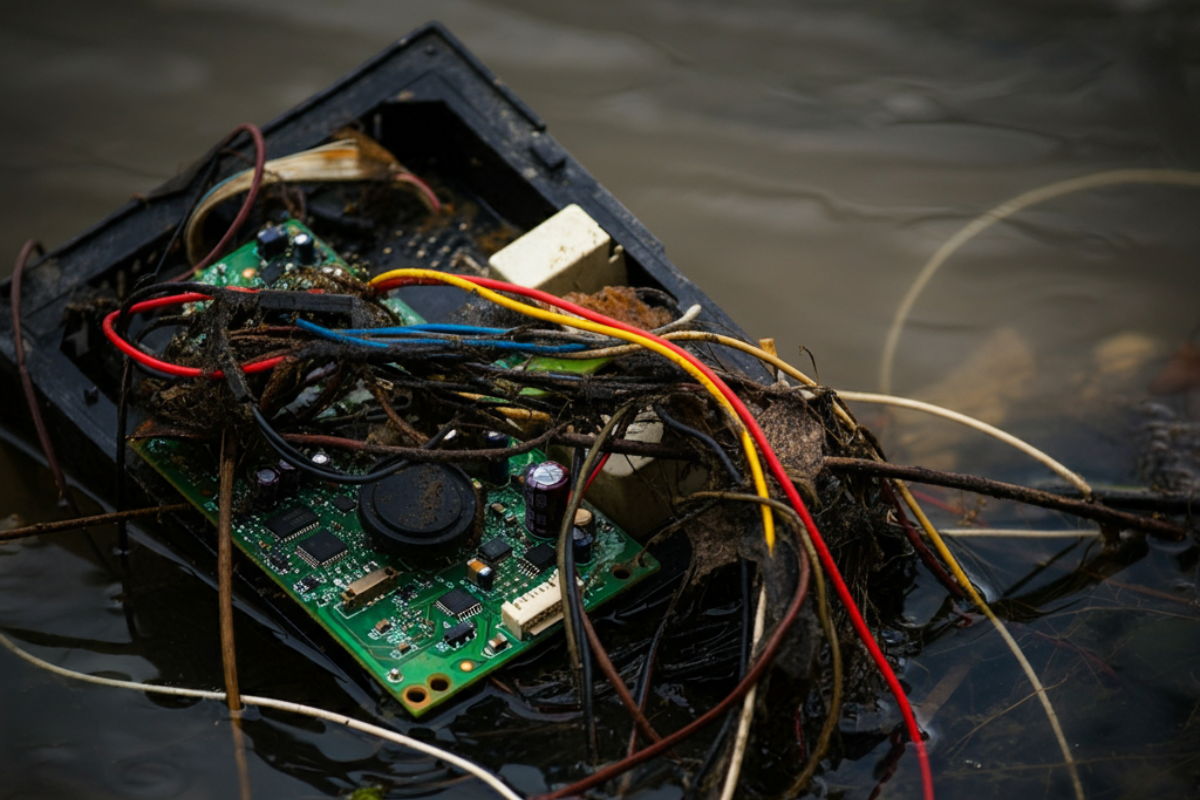
One of the most dangerous aspects of e-waste pollution is the leaching of heavy metals. Electronics are filled with hazardous materials like lead and mercury, which are highly toxic to both humans and wildlife. These chemicals can contaminate drinking water supplies and disrupt ecosystems, affecting the species that depend on rivers for survival. The impact of e-waste on rivers is far-reaching, from killing fish and aquatic life to poisoning the water people rely on.
In developing countries, the problem is even more severe. E-waste is often dumped in or near rivers, where it’s either burned or left to decay, releasing toxic fumes and leachates into the environment. Cities located near major rivers like the Ganges in India or the Citarum in Indonesia have become hotspots for e-waste dumping, with devastating effects on local communities and the environment.
How to Get Rid of E-Waste Properly
The good news is that we can all play a role in reducing e-waste and protecting our rivers. Proper disposal of electronics is crucial to preventing further pollution. Here are a few ways to ensure your old devices are handled responsibly:
- Work with Certified E-Waste Recyclers: One of the best ways to ensure your electronics are safely recycled is by using certified e-waste recyclers. These companies are equipped to handle electronics in an environmentally friendly way, preventing harmful chemicals from entering the water system. Certified recyclers often provide data destruction services to protect your sensitive information and ensure that your devices are processed according to strict environmental standards.
- Donate or Give Away Old Electronics: If your old devices are still functional, consider donating them to local schools, charities, or organizations in need. This extends the life of your electronics and keeps them out of landfills. Many organizations have programs specifically designed to refurbish and redistribute older devices to those who can’t afford new technology.
- Participate in E-Waste Collection Drives: Many communities host e-waste collection events, where residents can drop off their old electronics for safe disposal. These events often partner with certified recyclers to ensure that devices are handled properly. Keep an eye out for such events in your area, especially around Earth Day or World Environment Day.
- Trade-in Programs: Some electronics manufacturers and retailers offer trade-in programs where you can exchange your old devices for discounts on new purchases. Not only do these programs incentivize responsible disposal, but they also ensure your e-waste is handled correctly by certified recycling partners.
- Sell Your Old Devices: If your electronics still hold value, you can sell them through online marketplaces or trade-in programs. This helps keep e-waste out of landfills while giving someone else the chance to use the device.
Celebrating World Rivers Day
As we celebrate World Rivers Day, it’s important to recognize the impact that e-waste has on our precious rivers. These waterways are the lifeblood of ecosystems, economies, and communities around the world, yet they are increasingly threatened by pollution from discarded electronics. By properly disposing of your old devices and supporting e-waste recycling programs, you can play a role in reducing the harmful effects of e-waste on rivers.
Taking action to recycle your electronics doesn’t just protect the environment—it safeguards human health, conserves natural resources, and helps create a more sustainable future. So, next time you upgrade your phone or laptop, remember that your choices can help protect the world’s rivers and ensure they continue to thrive for generations to come. Let’s do our part this World Rivers Day and beyond, and commit to keeping our rivers clean and our planet healthy.



